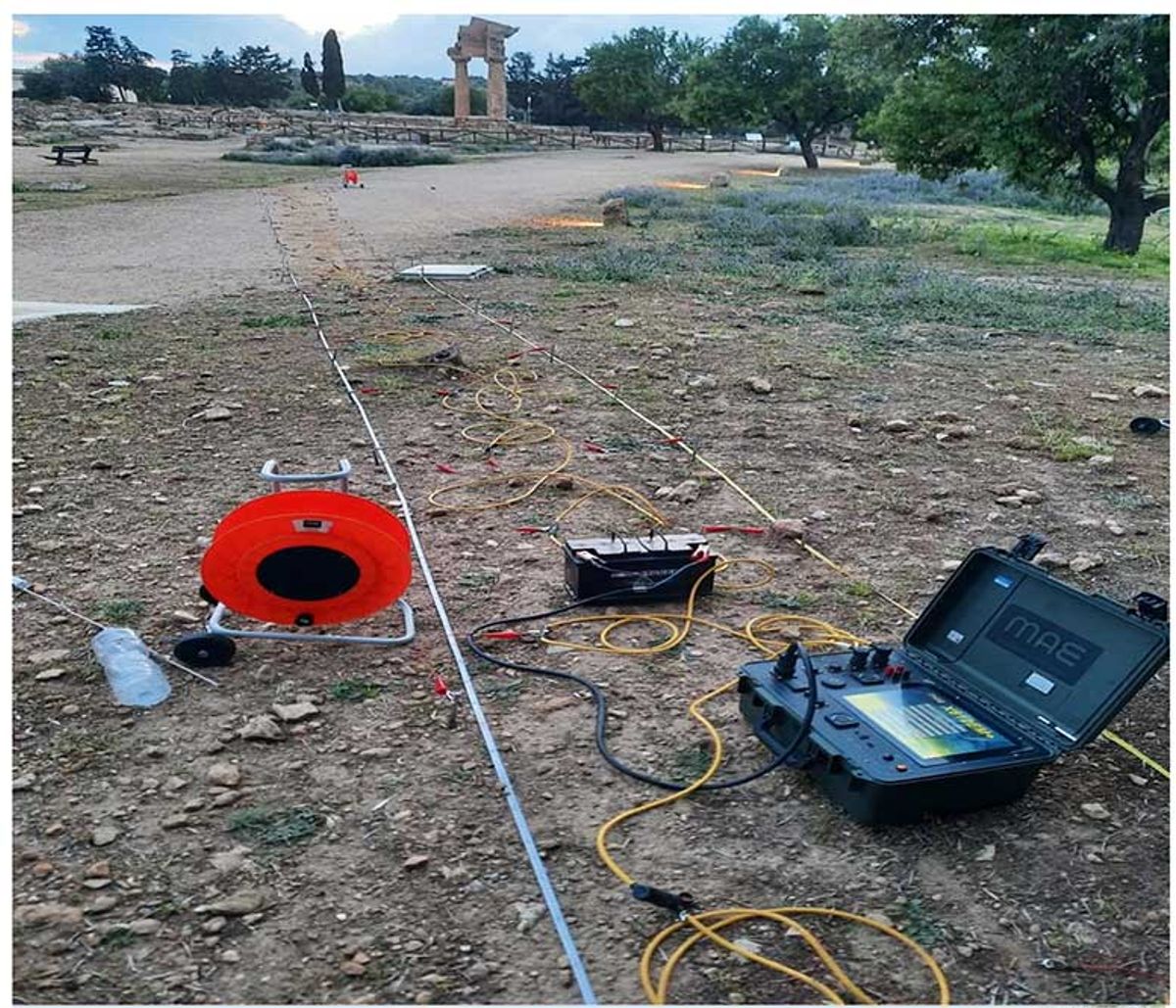Archaeologists working at Sicily’s Valley of the Temples—a Unesco World Heritage site in Agrigento, Italy—have revealed the remains of a previously unknown building. Although its function remains unclear, the structure may have been connected to religious life in the ancient city, which was founded by Greek settlers as Akragas in the sixth century BC.
“We are thrilled at the prospect of discovering a hitherto unknown monument in a crucial part of the city, possibly related to the nearby sanctuary,” says Sebastiano Imposa, an associate professor of applied geophysics at the University of Catania, and a member of the research team. “This could give us a better understanding of the city’s religious topography and help us determine the different phases of construction that took place in this area—located between a sacred sector and a residential district.”
Although the Valley of the Temples is one of Sicily’s most important archaeological sites, it was never fully excavated. The team discovered the building after exploring a 3,000 sq. m area using geophysical survey techniques. These enabled them to peer beneath the soil and create a map of potential underground remains, referred to as anomalies. Based on their shape and size, a number of the anomalies appeared to be buried structures.
“As we are very close to a sanctuary, we thought that there might be remains of unknown monuments in this area, and the geophysical anomalies clearly revealed their existence,” Imposa says.
To investigate further, the team conducted a test excavation on the spot where one of the anomalies lay hidden, and they came across a wall constructed from large stone blocks—seemingly part of a larger structure. “As the trench was limited, we brought to light only three blocks of this wall, which appears to continue northwards,” Imposa says. “In the south-eastern angle of the trench, we also found what might be the remains of a domestic kiln of a different date.”
The building’s function is yet to be determined, but it may have been part of a larger and more complex structure, the team write in their research paper, published in the Journal of Archaeological Science: Reports. Its date also remains uncertain. “It is far too early to speculate on the dating or function of this building,” Imposa says. “The excavation will continue next April and hopefully lead to an answer to these questions.”
The Valley of the Temples was founded as a Greek colony in around 580BC, and though mostly destroyed by the Carthaginians in 406BC, it later continued to flourish under Roman rule. Parts of the ancient city were first excavated and restored in the 19th century, with excavations continuing into the 20th century. Today, Agrigento is a popular tourist destination, thanks to its well-preserved temples. Its archaeological area has been inscribed on Unesco’s World Heritage list since 1997.


